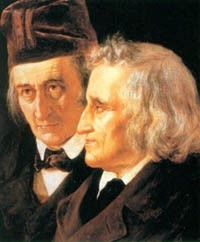The following exceprt is from a fascinating article in the November 26, 2012 edition of National Post about the Grimm brothers and their collection of folklore, published today as Grimm’s Fairy Tales.

…Two-hundred years ago, two German brothers with an interest in language published the first edition of a folktale collection they had gathered from around the German states — Germany not yet being a unified country. Published in a volume called Kinder-und Hausmarchen (Children and Household Stories) but better known as Grimm’s Fairy Tales, this first edition of 86 stories was followed by a number of other editions in which stories were added or subtracted until a seventh appeared in 1857, containing 211 tales. To date there have been countless editions and 160 foreign translations of the Grimms’ collected stories. With Martin Luther’s German translation of the Bible, Grimm’s Fairy Tales is the most widely read German book of all time.
The appearance of Grimm’s Fairy Tales is a story in itself. Jacob (1785-1863) and Wilhelm (1786-1859) Grimm came by their major fame almost accidentally. Raised in the city of Hanau, Hesse, the brothers Grimm attended university in the city of Marburg, where they developed a fascination with the idea of forging a common German identity through shared language, of which they felt folklore was an integral part. A nation’s folklore, they and others believed, is representative of national identity and should be preserved.